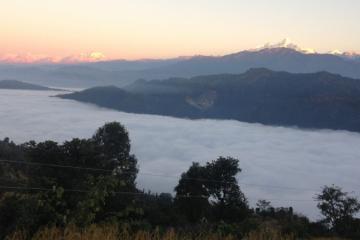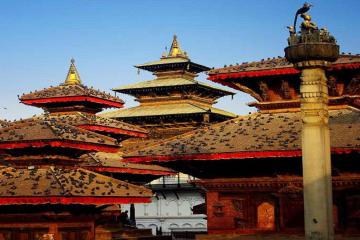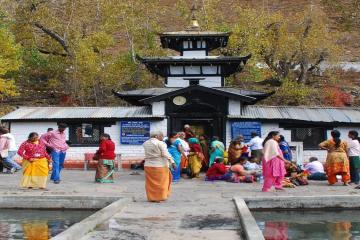Nepal Tours
Nepal retains one of the most unique and mysterious cultures seen nowhere else in the world. Every aspect of the Nepalese culture from the way they eat, sleep, build and create is in some way dictated by centuries-old tradition and values. The many ancient religious and traditional values of each ethnic group and diverse localities make touring Nepal absolute heaven for lovers of culture and nature.
Hinduism, Buddhism, and Shamanic Culture find themselves deeply intertwined among the people of Nepal, making for a lively and nonlinear cultural history. Much of the Nepalese way of life is dictated by either nature or centuries-old culture. The food that the Nepalese eat, the type of clothing they wear, and the many festivals they celebrate all are interlinked to the climate and religious traditions in Nepal.
The history of the capital city of Kathmandu, previously called “Kantipur” ventures into legends involving great sea snakes and holy Bodhisattvas. Within a medieval manuscript known as the Swayambhu Purana, the story of how the Kathmandu Valley came to be inhabited is stored. Kathmandu Valley was once a large lake housing great serpants known as Nagas who lived with their king the great Nagaraja. The Bodhisattva Manjushree who had come to pay homage to the land of Kathmandu that housed the Holy Swayambhu Stupa saw that the land could be made habitable and thus used his flaming Sword of Wisdom and in one fell swoop cut down the hillside of Chovar to make a gorge to drain the waters. The Nagaraja furious tries to attack Manjushree but are promptly stopped by his wives and children who recognize Manjushree and ask for his forgiveness. Manjushree allows the Nagas to reside in the lake nearby Choovar called Taudaha.
Such stories are a dime a dozen in Nepal, relating to why certain natural phenomena occur, how the inhabitants of a certain place came to be, why a certain temple was built, and so on. The Kathmandu valley itself is dotted with hundreds of religious and cultural sites. The major temples of Pashupatinath, Bouddhanath, and Swayambhunath have all been listed on UNESCO’s World Heritage list and so have the Durbar Squares of Kathmandu, Patan, and Bhaktapur.
Tantric form of Hinduism and Buddhism which is the main form practiced within Nepal is very esoteric and mysterious with its many rituals and mantras and its secret nature of being passed down from initiates only. You’ll find elements of this scattered throughout Nepal from the highest mountain regions to the plains of Terai but mostly centered around the Kathmandu Valley. The Kumari, commonly known as a living Goddess, a manifestation of the regal tutelary deity of Taleju Bhawani whose magnificent Temples can be seen in all three principal Durbar squares of Kathmandu Valley.
Buddhism sees itself flourish in all three of its primary divisions, Nepal is probably the only country where Theravada, Mahayana, and Vajrayana practices are found alive and together. Visiting the numerous Bahas and Monasteries around the valley and the country will take you back in time where compassion, ethics, and an ascetic way of life were still practiced and taught. You will see temples dedicated to Buddhas and Bodhisattvas, recitation of various ancient manuscripts and religious scripture, and much more.
The Nepalese way of tantric worship is one of a kind, flowers, rice husks, beaten rice, incense, diyas (oil lamps), animal sacrifice, dance, and music, all find themselves being offered in order to ward off spirits and demons or to gain the blessings of various deities. Among non-tantric temples are found shrines to Vishnu, Shiva and Ganesha dotted throughout the country. You might even see Jatras, chariot processions, and masked dances that fill you with awe and wonder.
The village lifestyle of Nepal is unique and for many is yet not affected by the effects of a modern technological lifestyle. Using wood for cooking on clay stands and using whole homegrown products is almost an art that is slowly being lost, however, the villages of Nepal still maintain much of this tradition. Villages also sport local animal husbandry with cows, goats, and sheep and will often include the drying of Corn and straw for the winter. You might even wander into small local parks and areas where locals gather for evening talk over a cup of tea. All of these are available for you to see when you tour the many small villages of Nepal.
On your way to these many villages, towns, and temples, you will see scenic views of the hills of Nepal and the Himalayas, and if you would prefer to see the majestic mountain ranges from above, various mountain flights and helicop














